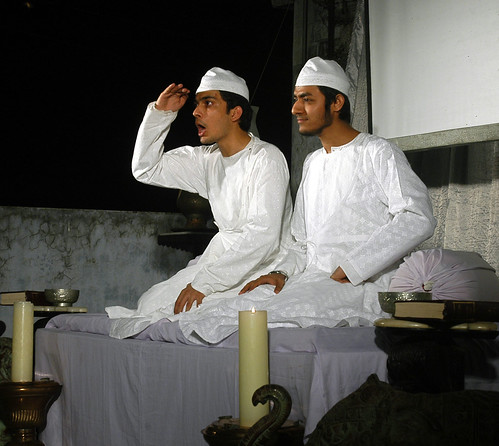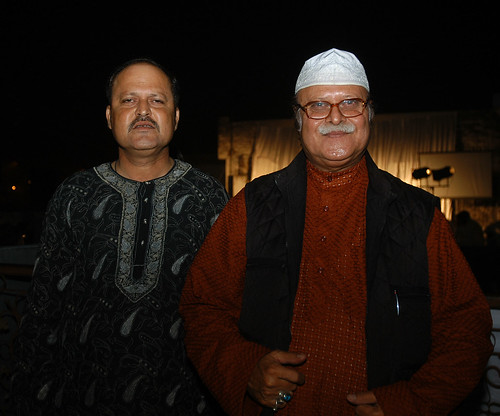By TCN Special Corespondent,
Lucknow: An era of 16th century was relived with two men dressed in white Kurta Pajamas and skullcaps narrating traditional romantic epics related to the 1001 Arabian Nights and Panchatantra at the residence of Nawab Mir Jafar Abdullah at Shish Mahal in Lucknow on Saturday night.
The terrace of Abduallah’s residence served as an open air stage while the audience sat on the floor listening to the extinct art of dastaangoi (story telling)

The event attracted youth and Gen-X who listened to the two young artists from New Ankit Chadha and Yogit Singh narrated the childhood adventures of Amir Hamza and Amar Ayar from Dastan-e-Amir Hamza.
Ankit and Yogit enjoyed the brilliant performance. Ankit is a budding writer while Yogit has completed law from National Law University, Gujarat.
The show started with the performance by co-producer of Peepli Live Mahmood Farooqui and his associate, Danish Husain, a noted stage artist. Both of them taking turns narrated the excerpts from the Tilism-e-Hoshruba (the enchantment that steals away the senses), a story from the Dastan-e-Amir Hamza (the story of Amir Hamza).

“The dastan (stories) influenced not only Urdu literature, but possibly also Parsi theatre, and through it, Hindi cinema. It was one of the popular forms of entertainment in old days when there were no other means of entertainment,” said Faaroqui.
“While it helps to know Urdu, the performance remains accessible and funny. Apart from dramatic and linguistic skills, dastangoes (Storytellers) must improvise as poets,” said Danish Hussain, Faaroqui’ companion in dastaangoi
Actors like Farukh Jafar and Jugal Kishore of Peepli Live fame were also present during the event.
Narrating the history of dastaangoi Nawab Mir Jafar Abdullah stated that at the height of its popularity in the late 19th to the early 20th century, the Indian dastan tradition was both an oral performance, as well as a written literary form.

A 19th century print version of the Dastan-e-Amir Hamza by Naval Kishore Publications runs into 46 volumes of about 1000 pages each, making it possibly the single longest romance in the world.
The word dastaangoi is made up of two Persian or Farsi words, ‘Dastan and ‘goi’ which means to tell a Dastan.

It is said that during the Nawabi era of Lucknow the Dastaangoi traditions touched the zeniths, but with time and the scarcity of people with good memorizing skills, the art started dying down. The stories were either recited or then read aloud in markets and staircases of mosques.

